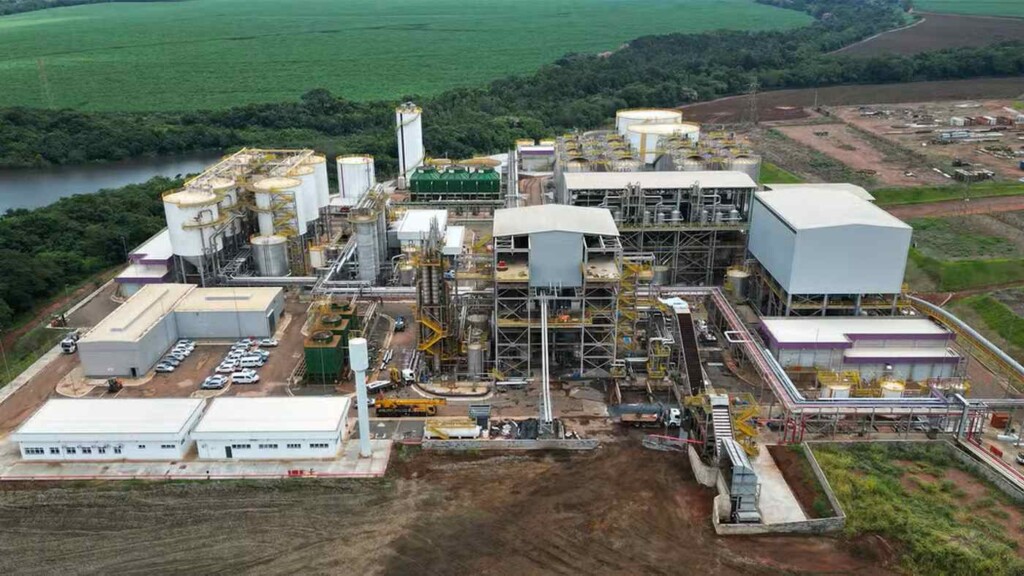
credit – Raízen, released to the press
In late May, Brazilian President Luis Ignacio da Silva visited São Paulo to inaugurate the world’s largest manufacturing plant for second-generation ethanol.
The new Bonfim Bioenergy Park will produce 82 million liters of ethanol per year utilizing a new method that produces 30% fewer emissions.
Located in the Brazilian state of Guariba, the nation’s largest center for the cultivation of sugarcane, the second-generation ethanol, also known as ‘bioethanol’ is made from the waste products of sugar production, known in the industry as bagasse.
Raízen, the company behind the Bonfirm plant, says that making ethanol from this waste creates 30% fewer emissions than if previous manufacturing methods were used.
New technologies allow for the extraction of residual sucrose from these already-crushed canes. A hydrolysis process uses enzymes to separate the individual cellulose fibers so they can be fermented more easily.
Raízen has another 9 second-gen plants under construction, and the company is aiming to produce 1.6 billion liters of biofuel per year in the future.
The largest single use of ethanol is as an engine fuel and fuel additive. Brazil in particular relies heavily upon the use of ethanol as an engine fuel being the world’s leading producer of ethanol. 90% of all new gasoline-powered cars sold in Brazil can also run on hydrous ethanol.
Along with the 30% reduction in emissions from manufacturing bioethanol compared to manufacturing conventional ethanol blends, the reduction in emissions from its use as a fuel is as high as 50 and 60%, according to a study from the Argonne National Laboratory.
“I realize that our engineering, that our researchers have managed to do what no country in the world that thinks it is better than us has done: we are able to transform that bagasse into something that produces ethanol of much better quality than the normal ethanol that we produced before, which is second-generation ethanol,” said President da Silva at the inauguration. Inauguration of World’s Largest 2nd Gen. Ethanol Plant Will Cut Emissions by 30% with Sugar Cane
Categories: Brazil,
Media,
World,
World-Record
